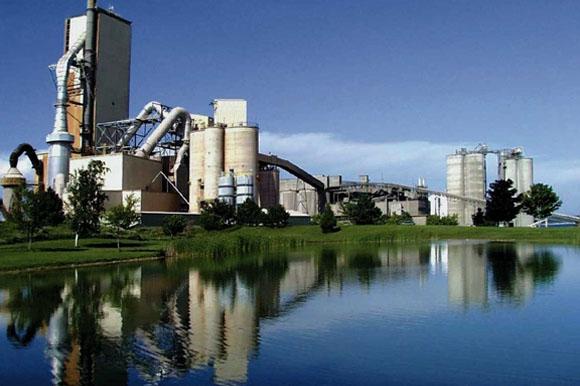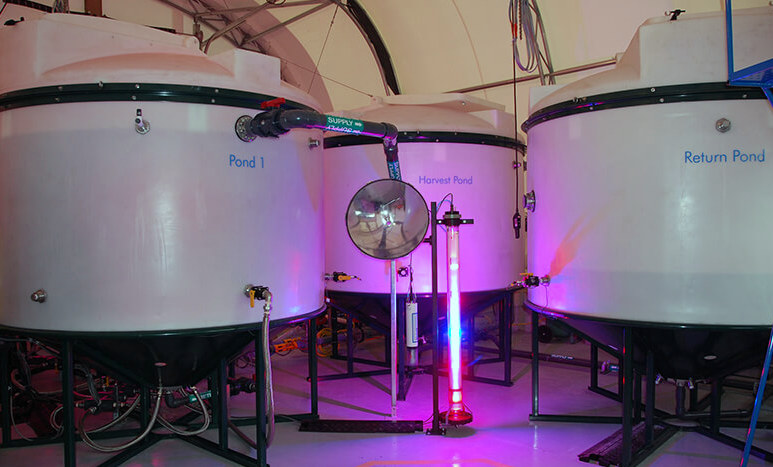With a strong surge of new projects already underway, 2017 is shaping up to be a record year for concrete construction across North America – and the demand for raw materials is keeping pace. According to the Portland Cement Association, demand for cement will rise at least 3.5% this year, with the same or greater demand projected for 2018.
With past cement shortages fresh in everyone’s mind, there have been concerns about demand outstripping supply. In fact, some industry experts say that this may happen by 2020 if construction trends continue as projected.
We at Votorantim Cimentos North America are watching these trends carefully. Knowing that a continuous supply of quality construction materials is crucial to your success, we have expanded the production capacity of our cement plants and increased our total storage capacity to assure that all customers have the materials they need, when they need them.
“Our production, storage and distribution network will provide uninterrupted supply to all key markets in the Great Lakes region for the foreseeable future,” says Jim Reznik, Director of Logistics for Votorantim Cimentos’ North American operations.

“We are currently expanding production at our Charlevoix, Michigan plant by 40%,” Reznik reports.
“We’ve also built storage domes at Charlevoix and at our Calumet City terminal outside of Chicago, adding 130,000 US tons of storage capacity to make sure there is always a ready supply of cement.”
Where we make and store your raw materials
St. Marys Cement, a Votorantim Cimentos company, operates four cement plants in the U.S. and Canada, along with two grinding plants for clinker and slag as well as 10 active supply terminals in Ontario, Wisconsin, Illinois, Michigan, New York and Ohio. In the U.S., these states represent five of the 10 most heavily populated areas and five of the 10 largest cement markets.
Together, the four St Marys plants produce more than 4 million metric tons (MT) of cement each year.
In Ontario, the Bowmanville plant has the capacity to produce 1.8 million MT of clinker and 1.2 million MT of cement annually. The 600,000 tons of excess clinker are shipped to the grinding plant in Detroit. Bowmanville supplies cement to the Greater Toronto Area, Cleveland and Toledo.
The St Marys plant in Ontario has the capacity to produce 750,000 MT of cement per year. This plant supplies terminals in southwestern Ontario, Buffalo and Detroit.
In the U.S., the Charlevoix, Michigan plant can produce 1.4 million tons of cement each year. The newly upgraded plant will not only increase capacity to 2 million tons of cement, but also meets new standards for eco-friendly operation, with new efficiencies and carbon mitigation strategies to reduce greenhouse gas emissions.
Charlevoix supplies cement to terminals in Wisconsin, Chicago and the west side of Michigan. It also supplies slag to the grinding plant in Badger, Wisconsin.
A second U.S. plant in Dixon, Illinois has the capacity to produce 360,000 MT of cement each year for the central Illinois and suburban Chicago market.
St Marys Cement grinding plants at Badger, Wisconsin and Detroit can also produce up to 350,000 MT of slag annually.
Just-in-time model assures efficiency, helps control costs
The St Marys distribution network relies on an intricate network of barges operating on the Great Lakes as well as rail cars and trucks moving throughout the region, Jim Reznik explains.
“Our strategy focuses on finding the quickest, shortest trip to the terminals with the best cost structure,” Reznik says. “Right now, barge transportation delivers the greatest efficiency and savings, so more than 50% of our cement is shipped by barge. It’s one of the most efficient modes of transport with the smallest carbon footprint.”
In all, St Marys employs four barges on the Great Lakes. The Charlevoix plant ships via two barges that are well-known among shipping enthusiasts.

The Conquest is a 1937-era steam powered tanker ship that was converted to a cement barge in 1987. The Conquest has a capacity of 7,500 MT and an offload speed of 1,000 tons per hour.
The storied St Marys Challenger was originally built in 1906 as a steam-powered ship to carry iron ore. Converted to a cement carrier in 1966, the Challenger continued under steam power until 2013, earning the distinction of being the oldest operating self-propelled cargo vessel on the Great Lakes.
Converted to a tug barge in 2014, it currently has a capacity of 11,000 MT with an offload speed of 1,000 tons per hour.
Bowmanville ships cement and clinker on two barges through Lake Ontario and Lake Erie.
The St Marys Cement I, has a capacity of 8,000 MT and an offload speed of 350 tons per hour, while The St Marys Cement II has a capacity of 17,000 MT with an offload speed of 500 tons per hour.
Rail cars fill the bill for markets farther inland
For service to land-locked terminals, rail cars are the first choice, says Jim Pajk, Senior Terminals Manager for St Marys Cement. “We have 175 leased rail cars in our system, which hold up to 110 MT of product each,” he says.
“We ship anywhere from 275,000 to 300,000 MT of material per year – including cement from Bowmanville and slag from Detroit – to terminals in Marysville, Ohio and other markets.”

Trucks are the third channel in the distribution system. “Generally, cement is sold in Canada as a delivered product, while in the U.S. it’s more of a pickup product, “says Pajk. “In Illinois, Prairie Material has 20 bulkers, while St Marys transportation partner Hutton has 100 tractors and 130 trailers. The Dixon plant trucks most of its product to local markets. Customers can also pick up cement at the plant.”
Terminals link production to the customer
For most customers, the materials terminal is the final link in the supply chain. “Our goal is to provide the cleanest, safest, most efficient loading process for all drivers,” Pajk says. “We can’t control the weather on the Great Lakes or the train schedules, but we can control the experience at our terminals.”
Safety is the biggest priority at all St Marys terminals. Recent improvements to the truck spotting device, which lights up when a truck is properly positioned for loading, have made the system precise to within two inches. This keeps the driver from having to re-position the truck after opening the top hatch or awkwardly trying to adjust the hose to load the tanker without moving the truck.
Another recent addition to many St Marys terminals is a fully automated self-loading system for customers. The operation provides increased flexibility for drivers who need to work outside the standard operating hours. “Self-loading is a great value-added service, “says Pajk. “Drivers can pick up loads at night during a night pour, or get an early start in the morning to avoid queues of other trucks.”
The system is also very safe, Pajk says. Cameras and monitors make it easy for the driver to position the bulker accurately. Check-out is simple too. “We’ve made self-service like going to the ATM,” Pajk notes. “The customer has his own card and can come in at any time.”
Currently, five North American terminals have self-service options with plans to roll the service out at all terminals in the next few years.
Keeping pace with your needs
With increased production from Charlevoix coming onboard next year, St Marys is actively researching new opportunities for terminals near rail or water.
”We want to be the company that’s easy to do business with,” says Jim Reznik. “That means placing terminals in current or new markets that are convenient to our customers. We never stop looking for ways to make sure that all customers have the top-quality materials they need to meet the most aggressive construction demands.”
Have questions about supplies, self-service pickup or any other materials needs? Reach out to your local Votorantim Cimentos affiliate company today.






















 United Materials
United Materials Superior Materials
Superior Materials Prairie Materials
Prairie Materials Canada Building Materials
Canada Building Materials VC Global
VC Global